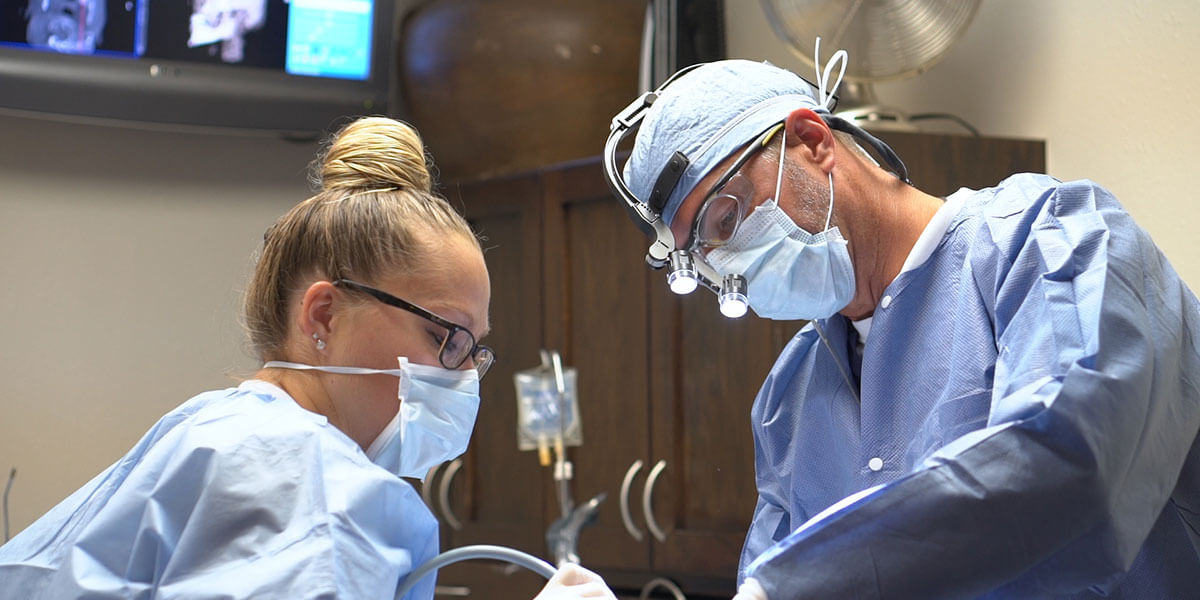Bone Grafting

Bone grafting may be required to address defects in a patient’s jaw. Bone grafting is a form of reconstructive surgery that helps to generate and rebuild bone and increase bone density.
Bone grafting surgery is performed to correct problems that may be the result of:
- Defects present from birth
- Trauma
- Removal of a tumor
- Tooth loss and subsequent loss of bone in the related jaw area
Minor Bone Grafting
The most common bone grafting procedure is performed to enhance the upper or lower jaw bone in order to increase bone quantity and density in preparation for the placement of dental implants.
When a tooth is lost, the surrounding bone often is often affected over time. Patients without enough jaw bone mass are not candidates for dental implants. Bone grafting is often performed to reverse bone loss or enhance existing bone, allowing for the placement of dental implants after the bone graft has healed and created the necessary foundation for the implants.
Bone grafting for the purpose of rebuilding jaw bone to support dental implants can usually be done in our office. The surgeon may recommend that the grafting material be taken from the patient's own bone or from another source. Synthetic material can also be used to generate bone growth. Bone grafting allows for proper support of dental implants or prostheses. Healing time prior to the placement of the implants is generally between 4 - 6 months, though it can sometimes take longer.
Major Bone Grafting
For more extensive bone grafting procedures, such as the correction of congenital defects, a hospital setting is required and grafting material may be taken from other areas such as the skull or hip.
Frequently Asked Questions About Bone Grafting
Is bone grafting painful?
We use local anesthetic to numb the area where we will be working prior to your bone grafting procedure, so you won’t experience any pain during your appointment. As the anesthetic wears off in the hours after your procedure, you’ll begin to experience some tenderness at the site. This is normal and the pain can be alleviated with cold compresses and over-the-counter pain relievers.
What is dental bone grafting?
Dental bone grafting is bone grafting that is performed to strengthen the jaw so it can provide adequate support to the teeth or dental implants. In most cases, bone grafting is needed after tooth loss or gum disease.
Can your body reject a bone graft?
No, bone grafting material is not living or genetically coded, so it cannot be rejected by the body. This doesn’t mean that every bone graft will be successful in regenerating bone, but you don’t have to worry about your body rejecting it.
How long does it take for gums to heal after bone grafting?
It can take up to 3 weeks for your gums to fully heal after bone grafting. Once your gums have healed, the process of bone regeneration continues in your jaw; this can take months to complete.
How long after a bone graft can I eat?
We recommended waiting until the local anesthetic has worn off before you begin eating again after a bone grafting procedure. Even if you feel ready to eat, you can injure yourself while chewing if your mouth is still numb.

